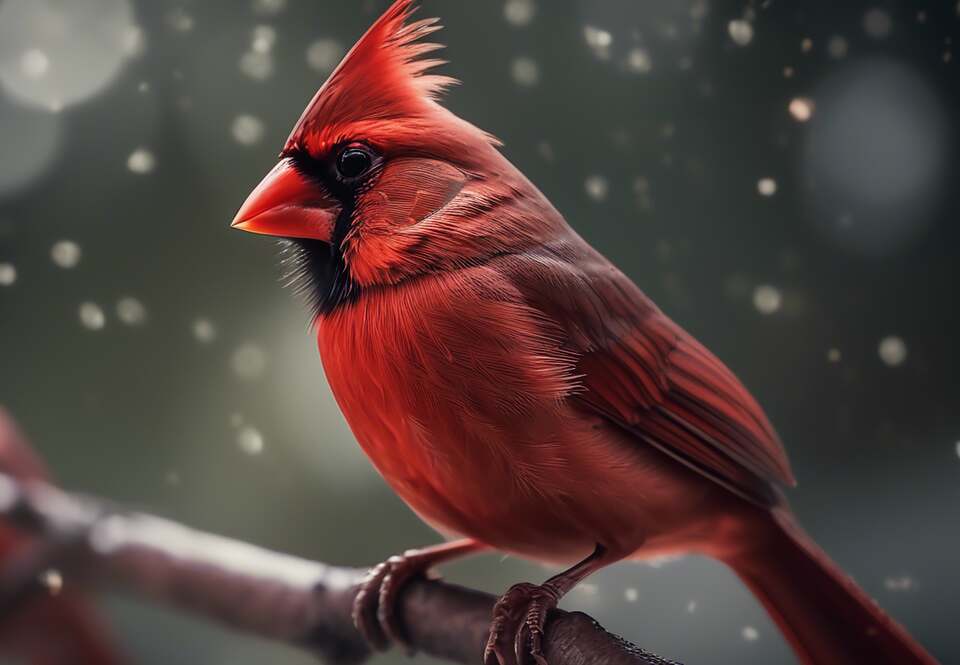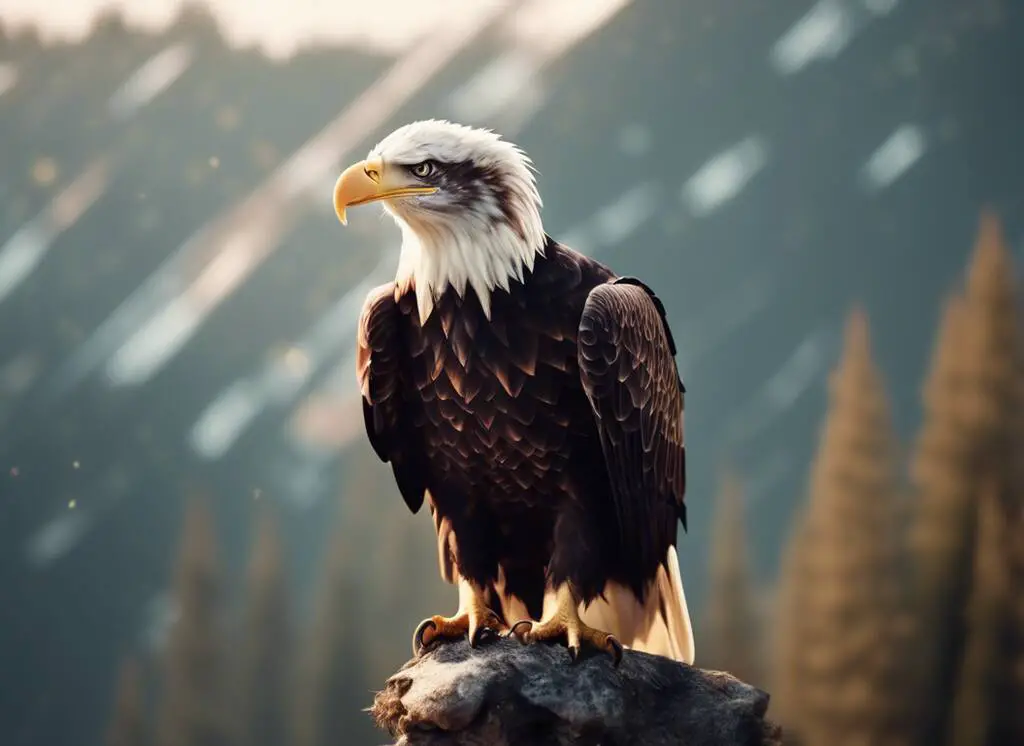Birdwatching enthusiasts and nature lovers often wonder about the diverse avian life present in the United States. The USA is home to a rich variety of bird species due to its diverse ecosystems, ranging from forests and grasslands to deserts and coastal regions. Understanding the number of bird species in the USA can provide valuable insights into the country’s biodiversity and conservation efforts.
Table of Contents
Number of Bird Species in the USA
The Diversity of Bird Species in the USA
The United States boasts an impressive array of bird species, with estimates suggesting that there are approximately 1125 different types of birds that can be found in the country. This includes resident species that inhabit the US year-round, as well as migratory birds that pass through during different seasons.
Factors Influencing Bird Species Diversity
The diverse range of habitats in the USA contributes significantly to the variety of bird species found in the country. From the bald eagles of Alaska to the hummingbirds of the Southwest, each region offers a unique environment that supports different bird populations.
Popular Bird Species in the USA
Some of the most iconic bird species in the United States include the American Robin, Northern Cardinal, Bald Eagle, Wild Turkey, and Blue Jay. These birds are not only well-known for their striking appearances but also play essential roles in their respective ecosystems.
Conservation Efforts for Bird Species
Conserving bird species is crucial to maintaining healthy ecosystems and preserving biodiversity. Organizations such as the National Audubon Society and the American Bird Conservancy work tirelessly to protect habitats, conduct research, and raise awareness about the importance of bird conservation.
Birdwatching as a Popular Activity
Birdwatching has grown in popularity across the United States, with millions of people taking up the hobby to observe and appreciate avian wildlife. This recreational activity not only allows individuals to connect with nature but also serves as a valuable tool for bird conservation efforts.
The Economic Impact of Bird Tourism
Birdwatching and ecotourism contribute significantly to the economy, generating income through birding tours, guided expeditions, and wildlife photography. Many regions benefit from bird tourism as visitors flock to see rare and exotic bird species in their natural habitats.
The United States is home to a diverse and vibrant bird population, with approximately 1125 species inhabiting its various ecosystems. The rich avian biodiversity of the country highlights the importance of conservation efforts to protect these birds and their habitats for future generations to enjoy.
Birdwatching continues to be a popular activity that not only offers recreational enjoyment but also supports economic growth through nature-based tourism initiatives. As we appreciate the beauty of these feathered creatures, let us also strive to ensure their continued presence in the wild through conservation initiatives and sustainable practices.

Bird Conservation Efforts in the United States
Importance of Bird Conservation
Birds play a vital role in maintaining the ecological balance of our planet. They contribute to pollination, seed dispersal, insect control, and overall biodiversity. Unfortunately, many bird species are facing threats such as habitat loss, pollution, climate change, and unsustainable hunting practices. Therefore, conservation efforts are crucial to ensuring the survival of our feathered friends.
Legislation and Protection
The United States has implemented several laws and regulations to protect birds and their habitats. One of the most significant pieces of legislation is the Migratory Bird Treaty Act of 1918. This act makes it illegal to harm, kill, or possess migratory birds, their nests, or eggs without a permit. The Endangered Species Act is another critical law that safeguards endangered and threatened bird species.
Conservation Organizations
Numerous conservation organizations in the United States are dedicated to protecting bird species and their habitats. The National Audubon Society, the American Bird Conservancy, and the Cornell Lab of Ornithology are just a few examples of organizations actively involved in bird conservation efforts. These groups work on research, advocacy, education, and habitat restoration projects to ensure the long-term survival of birds.
Habitat Restoration
Habitat loss is one of the most significant threats to bird populations. Conservationists focus on restoring and protecting critical habitats such as wetlands, grasslands, forests, and coastal areas. By creating and preserving suitable habitats, bird populations have a better chance of thriving.
Citizen Science Programs
Citizen science programs have become increasingly popular in bird conservation efforts. These programs engage bird enthusiasts and volunteers in collecting data on bird populations, migration patterns, and behavior. Projects like the Audubon Christmas Bird Count and eBird provide valuable information for researchers and conservationists.
Threat Mitigation
In addition to habitat loss, birds face other threats such as pollution, climate change, and human activities. Conservation efforts aim to mitigate these threats by advocating for sustainable practices, reducing plastic pollution, promoting renewable energy sources, and raising awareness about the impact of climate change on bird populations.
Collaborative Conservation
Conserving bird species requires collaborative efforts from government agencies, non-profit organizations, businesses, and the general public. By working together, stakeholders can pool resources, share knowledge, and implement effective conservation strategies to protect birds and their habitats.
Looking to the Future
As we move forward, it is essential to continue prioritizing bird conservation efforts in the United States. By raising awareness, supporting legislative action, investing in habitat restoration, and engaging the public in citizen science initiatives, we can make a significant impact on the conservation of bird species for generations to come.
Bird conservation efforts in the United States are vital for preserving our avian biodiversity and ensuring a healthy ecosystem. By taking action today, we can protect birds and their habitats for the benefit of all living beings.
Conclusion
In the United States, the incredible diversity of bird species never fails to captivate bird enthusiasts and conservationists alike. With over 1125 species recorded across the country, the USA is indeed a haven for avian biodiversity. From the majestic Bald Eagle to the charming hummingbirds, each bird species plays a vital role in maintaining the delicate balance of our ecosystems.
However, this rich tapestry of birdlife is facing numerous threats, including habitat loss, climate change, pollution, and invasive species. In response to these challenges, conservation efforts in the United States have been robust and multifaceted. Organizations like the Audubon Society, the American Bird Conservancy, and the National Audubon Society, among many others, are at the forefront of protecting and preserving bird populations across the country.
One of the key strategies employed in bird conservation is the establishment of protected areas such as national parks, wildlife refuges, and conservation areas. These protected zones serve as crucial habitats for birds to nest, feed, and rest, ensuring their survival in the face of mounting pressures. Additionally, initiatives like the Migratory Bird Treaty Act and the Endangered Species Act provide legal frameworks to safeguard vulnerable bird species from harm and exploitation.
Education and public awareness also play a pivotal role in bird conservation efforts. Through citizen science projects, educational programs, and outreach activities, individuals are empowered to contribute to bird monitoring, research, and habitat restoration. By engaging with local communities and fostering a sense of stewardship towards our feathered friends, conservationists are able to rally support for the protection of bird species and their habitats.
Furthermore, technological advancements have revolutionized the field of bird conservation, with tools like GPS tracking, remote sensing, and bioacoustics enabling scientists to study bird behavior, migration patterns, and population trends with unprecedented precision. By harnessing the power of data and cutting-edge technology, conservationists are better equipped to make informed decisions and implement targeted conservation strategies.
The United States boasts a remarkable array of bird species, each with its own unique beauty and significance. Through dedicated conservation efforts, we have the opportunity to ensure that future generations will continue to marvel at the sight of soaring raptors, melodious songbirds, and colorful waterfowl.
By working together to protect and preserve our avian treasures, we can secure a brighter future not just for birds, but for all living creatures that share our planet. Let us continue to cherish and safeguard the rich tapestry of birdlife that enriches our natural world.


